SB Television
Grand Banks: A Forward-Thinking Yacht Builder
 Grand Banks tank-tests each vessel to dial in the onboard systems prior to initial sea trials.
Courtesy Grand Banks Yachts
Grand Banks tank-tests each vessel to dial in the onboard systems prior to initial sea trials.
Courtesy Grand Banks Yachts
Mark Richards is a man on the move. The fiercely competitive sailor turned chief executive is reshaping how yachts are built. He’s blending a racing pedigree with a tireless drive for innovation while maintaining the traditions of a historic brand. At the helm of Grand Banks and Palm Beach Motor Yachts, he’s not just building boats—he’s rewriting the rules.
Richards grew up on the beaches of Sydney, Australia, where sailing wasn’t just a pastime; it was the rhythm of life on the water. By the time he was 6, Richards was already racing Manly Juniors. At 13, he was working at the Royal Motor Yacht Club, running the club’s launch and pumping gas at the fuel dock. It was there that he began to build a reputation as a natural boat handler, and where his love of boats and boating continued to flourish.
That passion led him to a four-year apprenticeship at Sydney Technical College at 16, splitting his time between the classroom and the shop floor at Martin Lewis Shipwrights. His craftsmanship evolved alongside his sailing skills. In 1986, he got a last-minute call from match racer Peter Gilmour to join the crew for the Columbus Cup in the United States. They won handily, and Richards’ professional racing career was off and running.
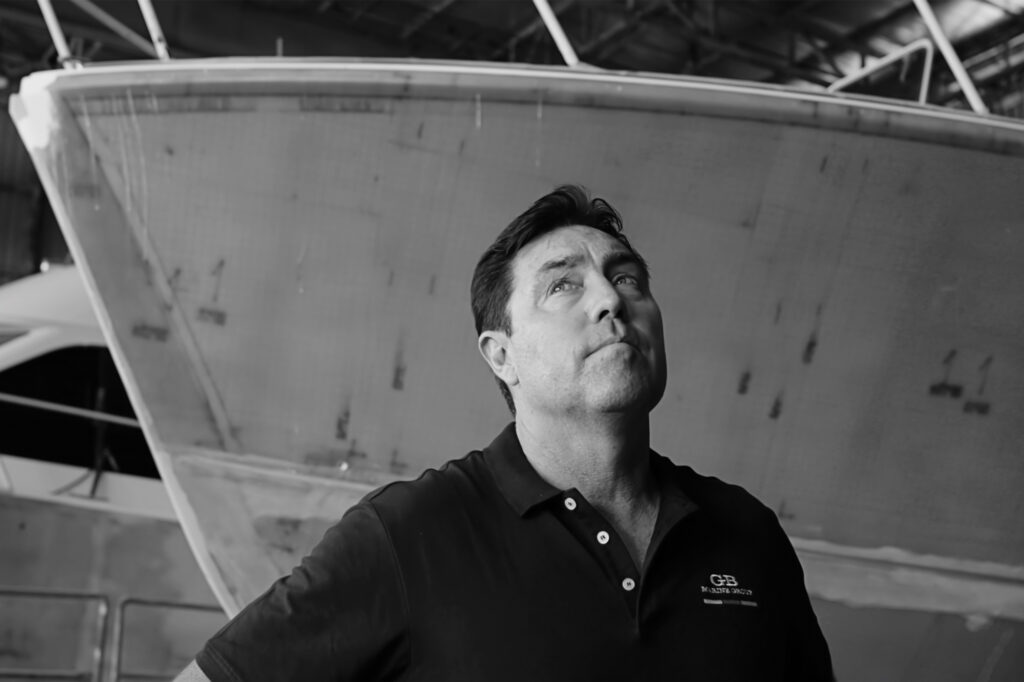 World-class sailor Mark Richards founded Palm Beach Motor Yachts and now leads Grand Banks Marine Group.
Courtesy Grand Banks Yachts
World-class sailor Mark Richards founded Palm Beach Motor Yachts and now leads Grand Banks Marine Group.
Courtesy Grand Banks Yachts
Over the next two decades, he became one of the most respected ocean racing skippers in the world. He competed in two America’s Cup campaigns, claimed a victory in the Admiral’s Cup, and helmed Wild Oats XI to nine line honors from 2005 through 2018 in the 628-nautical-mile Sydney Hobart Yacht Race. “I’ve always loved the challenge of pushing the limits,” Richards says. “In racing, every second counts. That mindset never leaves you.”
His ambitions extended far beyond the finish line. The same instincts that guided him to victory in competitive sailing would also shape his approach to yacht design.
In 1995, after hearing his father say that the best investment he could make was in himself, Richards launched Palm Beach Motor Yachts in Australia. His early builds caught the eye of seasoned yachtsmen, but it was the launch of the Palm Beach 38 and, later, the PB50 that turned heads across the industry. Sleek, balanced and well-engineered, they proved that luxury and efficiency could coexist in the same deck and hull. When the PB50 premiered in the United States, it won Best New Powerboat at the 2010 Newport International Boat Show. Richards repeated the feat in 2011 when the company introduced the PB55 in Newport.
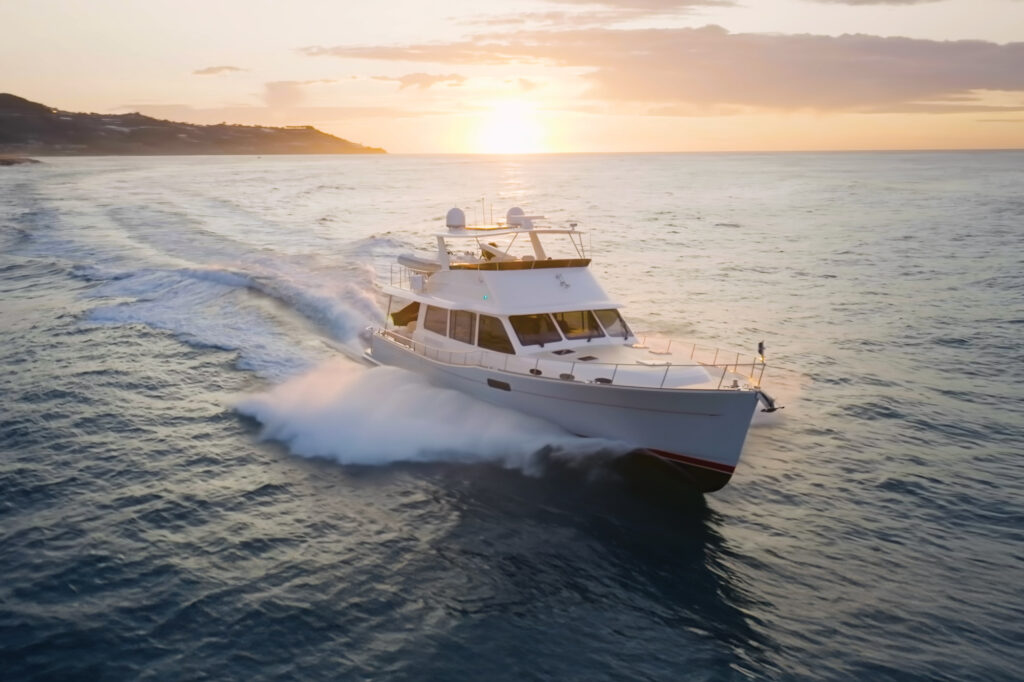 Today’s Grand Banks yachts are faster and more efficient, yet they retain beautifully classic lines.
Courtesy Grand Banks Yachts
Today’s Grand Banks yachts are faster and more efficient, yet they retain beautifully classic lines.
Courtesy Grand Banks Yachts
“Our goal was always to build boats that ran efficiently and looked beautiful,” Richards says. “It’s about combining art with engineering and never compromising on either.”
In 2014, Grand Banks Yachts acquired Palm Beach Motor Yachts. Richards was now at the helm of a much larger boatbuilder. But rough seas were on the horizon: The company was in trouble.
Since the 1960s, Grand Banks has been a leader in building boats designed specifically for long-range cruising, virtually defining an entire class of vessels along the way. The company’s roots trace to Hong Kong in 1956, where American expatriate Robert Newton and his sons founded a modest boatyard. Launched in 1963, the diesel-powered Spray laid the groundwork for what later became known as the Grand Banks 36. The immediate appeal of the design led the Newtons to abandon their custom yachtbuilding business and instead concentrate on a production line that would eventually become Grand Banks, as well as a line of long-range cruisers including the GB32, GB42 and GB49.
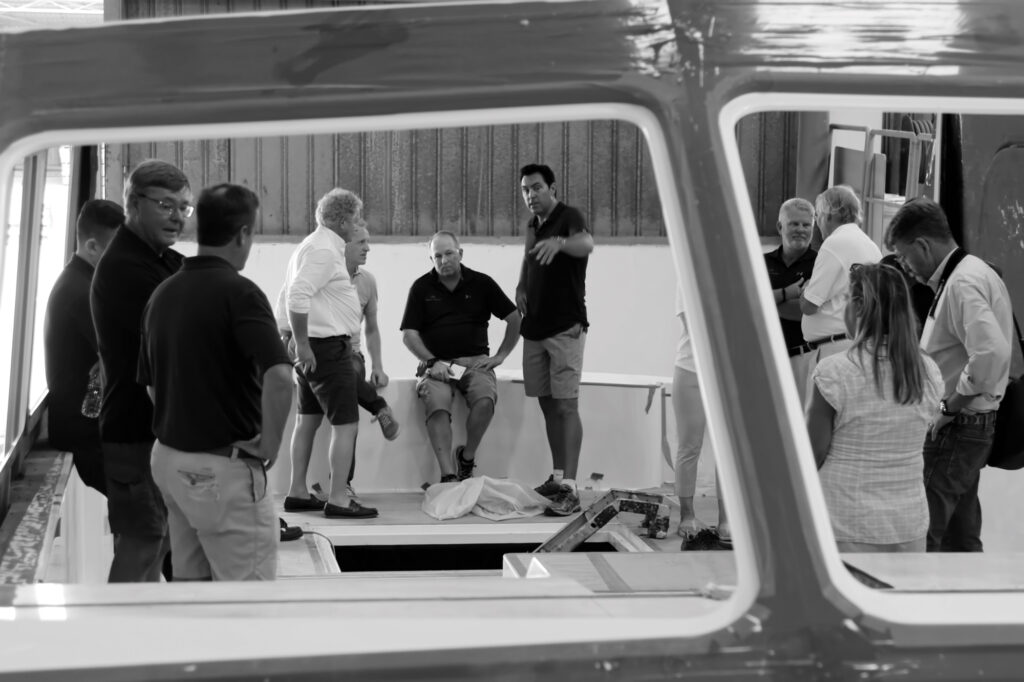 Under Richards’ leadership, Grand Banks found that rare sweet spot: advancing the technology while honoring a rich brand legacy.
Courtesy Grand Banks Yachts
Under Richards’ leadership, Grand Banks found that rare sweet spot: advancing the technology while honoring a rich brand legacy.
Courtesy Grand Banks Yachts
A shift to fiberglass construction arrived in the 1970s, alongside partnerships with designers like Sparkman & Stephens, Raymond Hunt and Tom Fexas. But the brand’s most transformative chapter began in 2014, when Grand Banks acquired Palm Beach. At that point, the company was operating in the red, reporting four consecutive years of losses.
As the new CEO, Richards hit the ground running. Production tooling for Palm Beach moved to Malaysia. Manufacturing techniques evolved. At the heart of the transformation was the V-Warp technology, a blend of carbon fiber, resin infusion and naval architecture that could deliver a smoother, faster and more fuel-efficient ride. Under Richards’ leadership, Grand Banks found that rare sweet spot: advancing the technology while honoring a rich brand legacy.
Another key to the company’s turnaround was a shift to factory-direct sales. It’s a business model that brings clients into much closer collaboration with the brand’s designers and engineers, allowing every yacht owner to create a production vessel with truly custom flourishes. And while Grand Banks has a team of professional salespeople based throughout the United States to build relationships with clients, these staffing expenses are a fraction of the cost of selling through a dealer network.
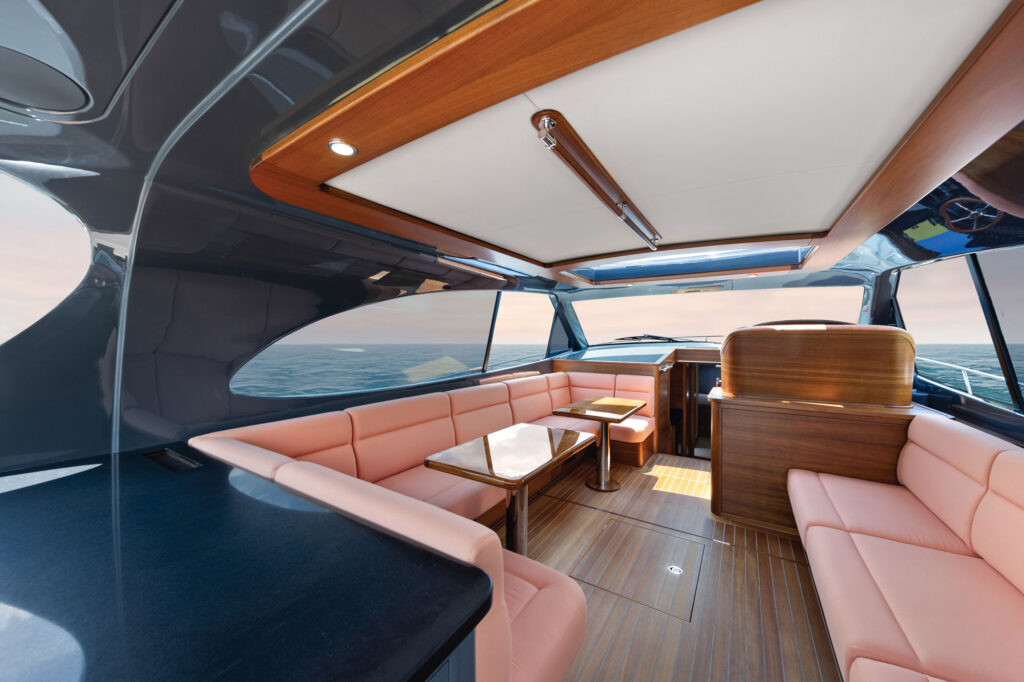 Warm wood interiors are a signature hallmark of both brands, which are renowned for their craftsmanship.
Courtesy Grand Banks Yachts
Warm wood interiors are a signature hallmark of both brands, which are renowned for their craftsmanship.
Courtesy Grand Banks Yachts
“I took a lot of criticism for this decision because it’s so abnormal for our industry to do this,” Richards says. “The world has changed. If you can do it yourself, why not do it yourself?”
Grand Banks took another major leap with the recent unveiling of a composite manufacturing facility adjacent to its current property. The 143,300-square-foot addition represents a 25 percent increase in total yard size, bringing the shipyard’s total footprint to nearly 700,000 square feet.
During the official opening in March, Richards led members of the media through the facility, which showcases the latest in marine technology, including an eight-axis robotics system, engineering labs and a dedicated testing pool. All of this aims at building yachts with greater efficiency.
Perhaps even more important is Richards’ personal touch. As we walked with him on the tour, he was quick to acknowledge the workers with a grin and a nod or handshake. He knew most of the workers by name, wherever they worked on the line. That rapport was genuine, and it was clear the staff enjoys working for the gregarious Australian. “I was taught early in life that being good to people is important. If they look after you, you must look after them,” he says.
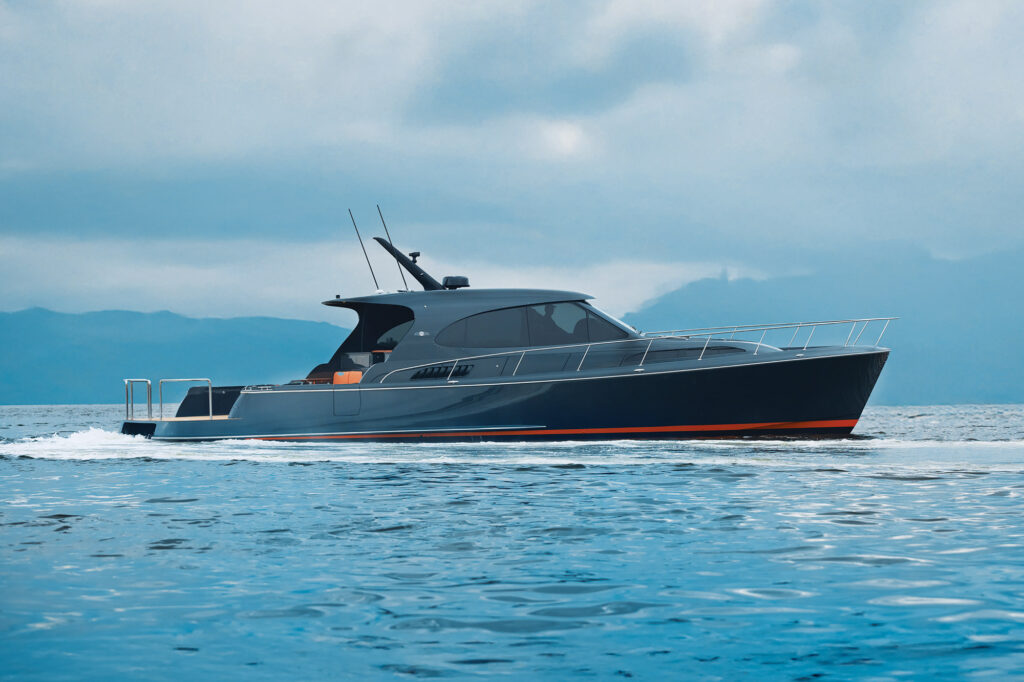 This new Palm Beach GT60 has HamiltonJet drives, which give it a draft of less than three feet.
Courtesy Grand Banks Yachts
This new Palm Beach GT60 has HamiltonJet drives, which give it a draft of less than three feet.
Courtesy Grand Banks Yachts
What makes Richards unusual isn’t just that he’s a competitive sailor or a chief executive, but also that he’s still a hands-on boatbuilder. “I don’t believe in building boats from behind a desk,” Richards says. “You need to feel them being built, understand how they breathe and move. Only then can you make them better.”
Nowhere is this hands-on ethos more evident than in the upcoming Palm Beach 107, the largest yacht in the company’s history. But for Richards, the excitement is not just about size. “We’re building something that’s not just bigger, but smarter,” he says. “Less fuel, more range and that same unmistakable great Palm Beach ride.”
As Richards nears three decades as a builder and nearly 40 years on the water, his vision continues to evolve with each vessel. At its core are smarter systems, greener propulsion and hulls that ride like nothing else on the water today.
“I’ve never wanted to just follow what others are doing,” Richards says. “We’re in this to lead, to innovate and to keep pushing forward.”
All About the RideAt the heart of the Grand Banks and Palm Beach yacht designs is their proprietary V-Warp hull form, with a knifelike entry, graceful curvature amidships and minimal deadrise at the transom. Each hull is infused with a specific ratio of resin to E-glass unidirectional and multiaxial fiber. The hull is then fused directly to the carbon-fiber bulkheads, deck and superstructure of the vessel. Grand Banks says this process creates higher speeds and increased fuel efficiency.
Powering AheadGrand Banks builds seven vessels in its long-range cruiser line, from 54 to 85 feet length overall, plus two models in the downeaster series, the Eastbay 44 and Eastbay 60. Palm Beach Motor Yachts has nine models in the Classic line from 42 to 107 feet length overall. The GT and GTRS series each have three models at 50, 60 and 70 feet. Power options can include straight shafts, IPS, jet drives and outboards.
Take the next step: gbmarinegroup.com
The post Grand Banks: A Forward-Thinking Yacht Builder appeared first on Yachting.
- Home
- About Us
- Write For Us / Submit Content
- Advertising And Affiliates
- Feeds And Syndication
- Contact Us
- Login
- Privacy
All Rights Reserved. Copyright , Central Coast Communications, Inc.